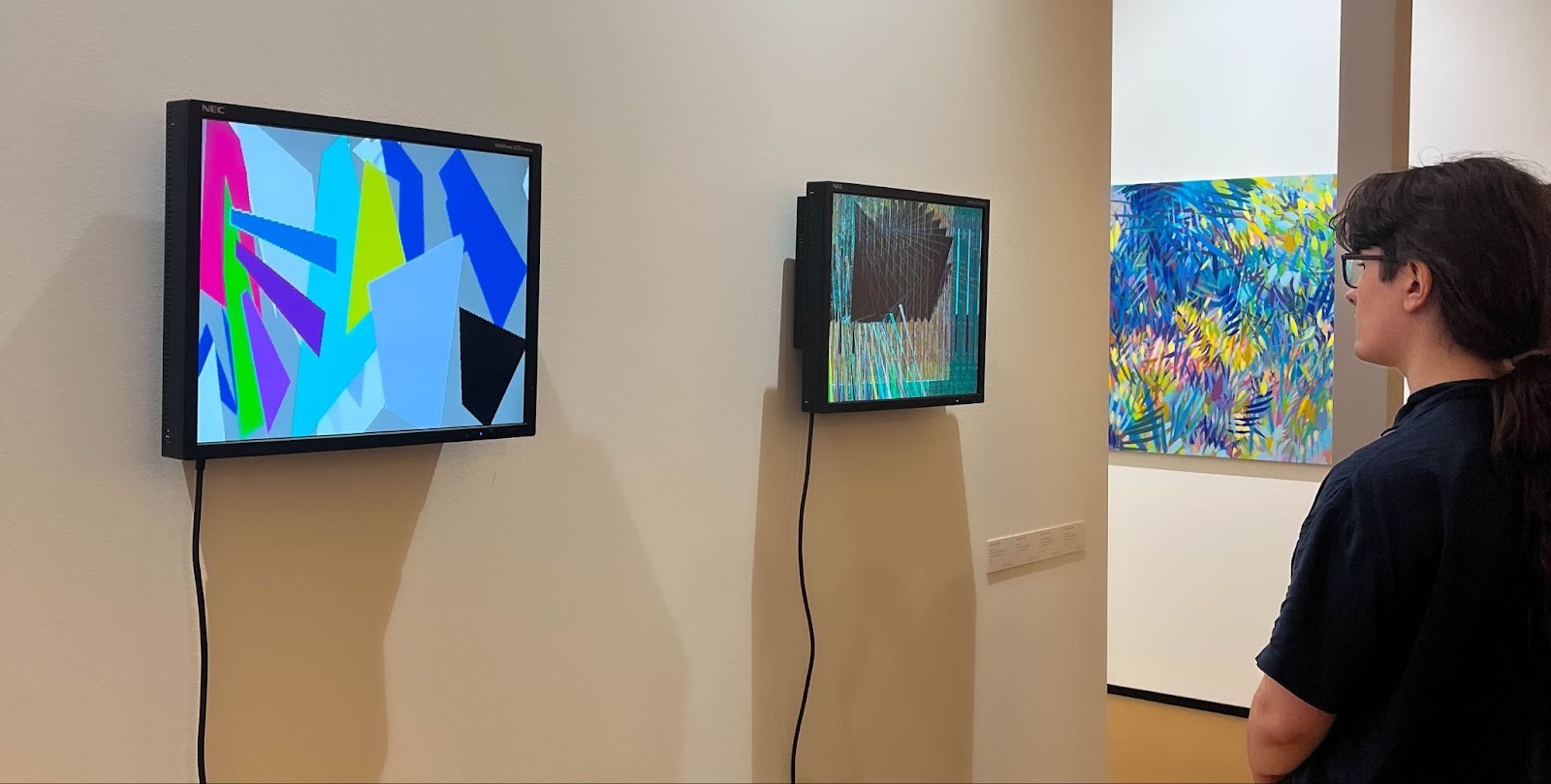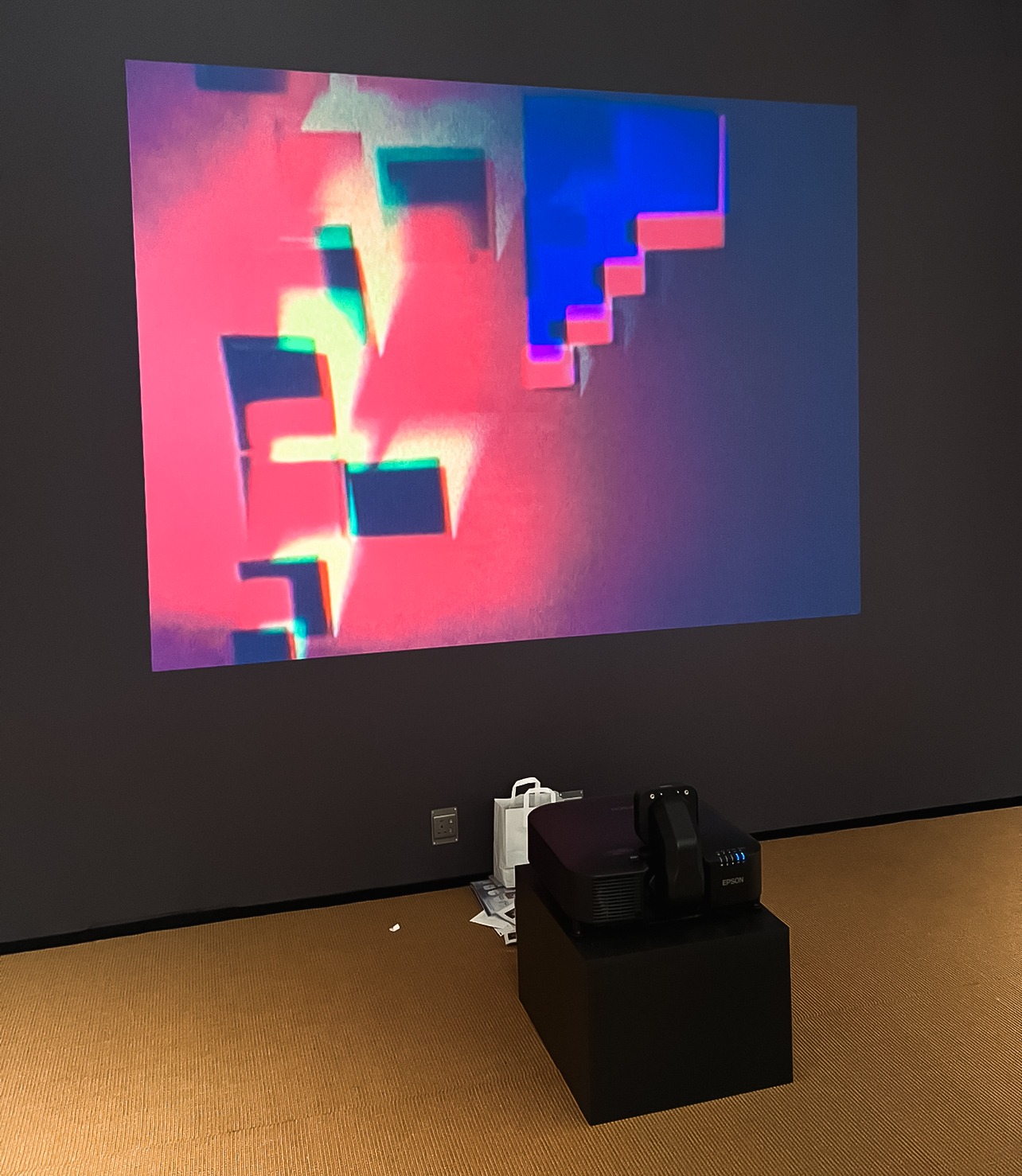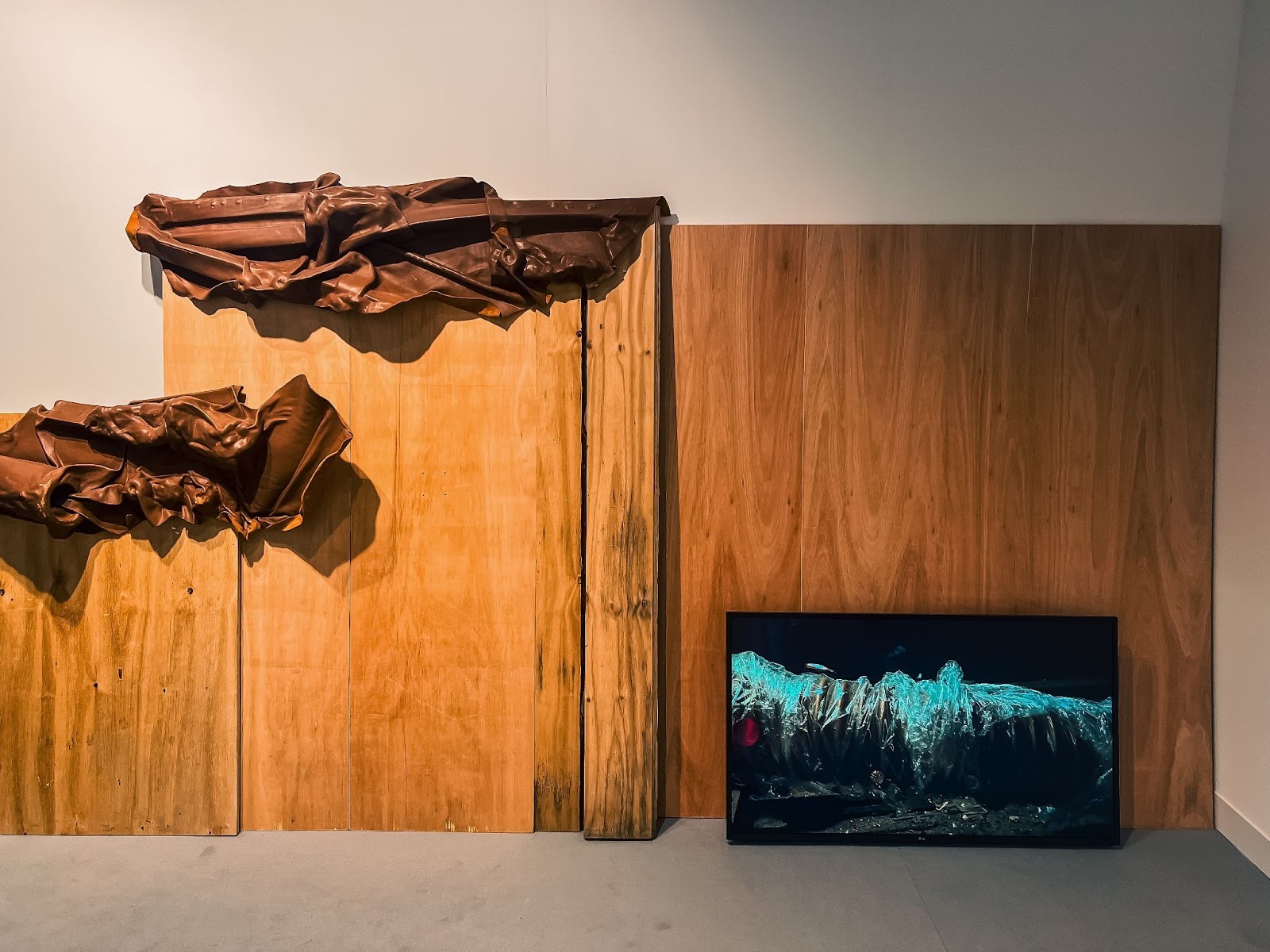Frieze London and Frieze Masters 2025 convened 280 galleries across 45 countries, turning Regent’s Park into a five-day crucible of contemporary and historical discourse. Attendance hit 90,000 visitors from 108 nations, including notable museums, collectors, patrons, and celebrities, who sustained a charged atmosphere throughout. Dealers reported consistent foot traffic, strong sales, and key institutional buys, underscoring London’s enduring market importance.
Let’s look at some of the work that caught our eye…
Samia Halaby | Sfeir-Semler Gallery
Samia Halaby was one of six artists curated by Sheena Wagstaff and Margrethe Troensegaard for this year’s ‘Studio’ section, which explores the studio practices of acclaimed living artists.
Samia Halaby, a Palestinian artist based in New York City, is a trailblazer in digital art. After nearly forty years of painting, she taught herself BASIC and C coding languages and began exploring the Amiga Commodore 1000 (the first personal computer released by Commodore International in the Amiga line) as a tool to create. Halaby’s style is rooted in abstraction and her work intertwines motion, color and form to create dynamic and immersive works. Her digital “kinetic” works emphasise movement through rhythmic repetitions, layered planes, and directional flows, evoking a sense of flux and energy.
Halaby writes code to generate shapes (e.g., geometric forms like circles, lines, or curves) in primary colors. Each line of code triggers specific actions, such as making a shape appear, move across the screen, expand, contract, change color, or repeat in patterns. This creates a sense of rhythm and flow, mimicking the implied motion in her traditional paintings.
Her digital works use time as a dimension. The code dictates the speed and sequence of visual changes, allowing shapes to evolve dynamically. For example, a red circle might grow, shift to blue, then disappear, all within a programmed timeline, creating a visual narrative that unfolds for the viewer.
Halaby embeds early computer-generated sounds, like chimes or beeps, into the code, synchronizing them with the visual movements. This multisensory approach enhances the kinetic experience, making the artwork feel alive and immersive.
Halaby told MoMA in a recent interview, to think of her digital works more like living processes – like an unfolding flower in a time-lapse, rather than just images that move.
“It’s about capturing that organic evolution, not motion for show.”
“These coded paintings feature shapes that grow, shrink, change colors, vanish, reappear, and even include sound. The screen acts like a canvas with memory, glowing with light. This new technology demanded a new visual language, one that could handle constant change. I had to think about the speed and rhythm of how these shapes moved and unfolded over time. Adding time as a dimension changed everything about this art. Early 20th-century artists like the Constructivists and Cubists wrote about time as a new frontier in abstract painting, and my coded kinetic paintings brought their ideas to life in a way that felt thrilling and true. This work built on years of painting with oil, but coding pushed my colors to become bolder and my creative process more open to instinct and spontaneity.”

Nalini Malani | Volte Gallery
Widely considered a pioneer of video art in India, Nalini Malani has 50 years of multi-media experience that includes film, photography, painting, wall drawings, theatre, animation and video/shadow play.
Malani uses her work to spotlight marginalised voices, rooted in her lived experience of the 1947 Partition where her family was displaced from Karachi to Mumbai. Her work often conveys themes of violence, feminism, politics, racial tension & social inequality.
Malani’s international breakthrough came at dOCUMENTA(13) with her iconic work ‘In Search of Vanished Blood’ – a large-scale, multi-media installation which combines video, sound, and a "shadow play" of painted rotating Mylar cylinders to create an immersive, non-linear narrative that explores themes of post-colonial violence, the plight of women, and the suppression of history.
At Frieze Masters, Volte focused on Malani's multimedia practice during her formative years highlighting Malani’s early photography and experimental film from the 1960s-70s. These black and white photograms and films remained in the artist's studio for more than 4 decades.
The photogram selection for this display was only discovered in 2024 from her studio archive and has never been shown internationally. These early experimental films have also never been shown in UK before.
Dream Houses is a stop-motion animation shot with reverse stock film on VIEW’s 8mm camera. Malani used a cardboard marquette and coloured lenses to create floating architectural blocks with a hallucinogenic palette. She expanded on Johannes Itten’s and Josef Albers’s research into colour theory, as she explored the complexities of additive colour in film.
Dream Houses iis Malani’s earliest colour film, created after she graduated from Sir Jamshedjee Jeejeebhoy School of Art in Mumbai. In this stop-motion animation shot with reverse stock film on VIEW’s 8mm camera, Malani used a cardboard marquette and coloured lenses to create floating architectural blocks with a hallucinogenic palette. She expanded on Johannes Itten’s and Josef Albers’s research into colour theory, as she explored the complexities of additive colour in film.

Eunjo Lee | Niru Ratnam
Eunjo Lee is a South Korean artist and filmmaker based in London and Seoul, whose work explores the interwoven ecology of life, matter, and machine. Lee utilises gaming graphics software such as Unreal Engine and Blender to create mythical and sometimes ominous digital worlds.
Niru Ratnam showcases Lee’s ‘The Hesapia Trilogy’ at Frieze London which consists of the three films, ‘The Lullaby of the Ruins’, ‘When Forgiving the Sunlight’ and ‘Before the Shadow Taught the Sun’.
Lee’s trilogy is a meditation on the eternal dance between life and death – a cycle without end, mirrored in the films’ tripartite structure where echoes and parallels flicker across each film, weaving each moment into an infinite story.
Lee’s work creates a world where all things resonate as part of one extended consciousness, suggesting that advanced technology might offer the opportunity to revive the expansive, interconnected consciousness of ancient worlds – instead of destroying humanity.

Suh Se Ok x LG OLED : Reimagined by Suh Do Ho, Shaped by Suh Eul Ho
“Suh Se Ok x LG OLED: Reimagined by Suh Do Ho, Shaped by Suh Eul Ho" is an immersive art exhibition that blends traditional Korean ink painting with cutting-edge digital technology. It honours the legacy of pioneering abstract artist Suh Se Ok (1929–2020) by having his sons, contemporary artist Suh Do Ho (known internationally as Do Ho Suh) and architect Suh Eul Ho, reinterpret his works using LG's innovative OLED displays.
Suh Se Ok was a seminal figure in modern Korean art, renowned for his abstract ink paintings that bridged traditional East Asian aesthetics with Western abstraction. Over a seven-decade career, he created over 3,290 works, establishing himself as a trailblazer who redefined ink painting through a minimalist yet profound exploration of human essence, spatial infinity, and dynamic brushwork.
The project explores themes of human essence, infinite space, and the fluidity of brushstrokes, transforming static ink abstractions into dynamic, multi-dimensional animations, using LG’s transparent screens that enable layering.

Ana Gzirishvili | Gallery Artbeat
Ana Gzirishvili’s installation explores liminal spaces between beings, objects, and places, addressing themes of transitionality, circulation, and displacement. Influenced by her upbringing amid the ruins of the Soviet Union, Gzirishvili examines instability and transformation through wooden boards resembling dismantled constructions and wet-molded leather sculptures casting still life compositions of found objects, produce, and plasticine forms resembling body parts set within architectural contexts.
Referencing Timothy Morton’s idea that ‘to coexist is to have been wounded,’ her work interrogates the scars and impressions left by encounters between objects and environments.
Gzirishvili’s works are inspired by French psychoanalyst Didier Anzieu’s theory of the Skin-Ego, which reimagines the skin not merely as a biological boundary but as a psychic membrane, both protective and receptive, where physical and emotional experiences are inscribed. In her work, this idea materializes through traces of absence: marks that embed themselves in memory and evolve over time.

Enrique López Llamas | LLANO
Llamas’ work explores the endless, Sisyphean push of trial and error that defines both adult life and a devotion to creating art. It captures the highs of triumph and the sting of risk, the quiet moments of shame and the loud stages of confidence, the inner clash of feeling like a fraud one moment and the star of your own story the next.
